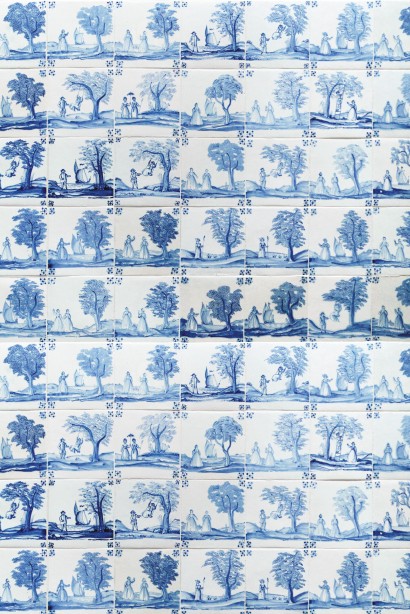The first exhibition on Stanisław Herakliusz Lubomirski will be held at the Royal Łazienki Museum from 26 April to 1 September 2024. The figure of this eminent writer and politician, one of the most colourful representatives of the Polish Baroque, is presented through a rich collection of artefacts originating from domestic and foreign collections, including exquisite paintings, puzzling drawings and old prints, unique vessels, as well as objects extracted straight from the crypt.
The exhibition is open from Tuesday to Wednesday 10.00–17.00, on Thursday and Friday 10.00–18.00, on Saturday 12.00– 20.00 and on Sunday 10.00–16.00. Last entry 30 minutes before the exhibition closes. Admission: PLN 30 – normal ticket, PLN 15 – reduced ticket, PLN 20 – adults with a Large Family Card, PLN 1 – children over 7 years and youth up to 26 years, on Fridays – admission is free of charge. Tickets can be purchased at the ticket office and from the ticket machine at the Officer Cadets School and online.
Marshal Lubomirski – founder of the Royal Łazienki
Stanisław Herakliusz Lubomirski is the personage with whom the history of the Royal Baths began. In 1674, he took possession of the vast Ujazdów area, together with a woodland area known as Zwierzyniec – now forming the premises of the Royal Łazienki where we walk every day. Here, on a small island, the marshal ordered the erection of a small bathing pavilion. The Baroque Bathhouse was later extended by King Stanislaw August. This is how the most beautiful building in the Royal Łazienki, namely the Palace on the Isle, was created, and how the whole residence took its name from the Bathhouse.
On the occasion of the 350th anniversary of the acquisition of the Ujazdów estate by Stanisław Herakliusz Lubomirski, the Royal Łazienki Museum is hosting an exhibition dedicated to this outstanding writer and politician. As a person of wide-ranging interests and a rich biography, he was associated with many aspects of Polish history: international politics (he successfully defended Spisz against the Emperor’s attempts to separate it from Poland), domestic politics (in recognition of his merits, he was granted the Crown Marshal’s Office from Michał Korybut in 1673 and the Grand Marshal’s Office from Jan III in 1676), military history (he founded the hussar flag which accompanied Polish troops at Vienna in 1683), literature and philosophy (author of treatises, comedies, songs) and architecture (founder of numerous buildings). Stanisław Herakliusz Lubomirski was a rare example in Poland of the pre-partition era of an individual who successfully combined involvement in political life with literary activity; the recognition of his contemporaries was reflected in the nickname “Polish Salomon”.
What will we see at the exhibition?
The exhibition consists of two parts: At the Palace on the Isle, we can discover the history of the Marshal’s Baroque Bathhouse, the traces of which can still be noticed in the architecture of the residence of the last king of Poland. One of the rooms in the pavilion, decorated with 17th-century stucco is opened to the public for the first time in the Museum’s history.
The core of the exhibition is located in the Officer Cadets School. Here we can learn about the various strands of Stanisław Herakliusz Lubomirski’s biography. The exhibition begins with the history of Ujazdów and Zwierzyniec and the Baroque Bathhouse. Then, we may have a closer look at, among other things, the Marshal’s family history, his literary works, foundations and patronage, and political activities.
The presentation of Stanisław Herakliusz Lubomirski’s rich biography and versatility required finding exhibits that would be equally intriguing. Exceptional artefacts were lent from 15 Polish and five foreign institutions (French, Swedish, Slovak, German, Hungarian). Many of them are being presented in Poland for the first time.
We can see exquisite paintings and prints, including those by Rembrandt, puzzling drawings and old prints, including designs for Baroque buildings, silver liturgical and feast vessels and objects pulled straight from the crypt. The display of various memorabilia of Marshal Lubomirski is enriched by a multimedia show. The entire exhibition allows visitors to embark on a fascinating journey into the world of the Polish Baroque and to learn more about the history of the Royal Łazienki.
Events accompanying the exhibition
The exhibition is accompanied by events for children, young people and adults, introducing the figure of Marshal Lubomirski and his heritage. The programme includes historical and art workshops, museum lessons, walks in the Łazienki gardens, literary meetings, kamishibai theatre shows, a research conference, as well as guided tours of the exhibition for different age groups, including people with special needs (Polish Sign Language, audio-description).
The exhibition provides facilities for people with disabilities, such as: QR codes with audio descriptions, typhlographics, easy-to-read texts (ETR), a mock-up of Ujazdów for tactile learning, with captions in Braille language. There are no architectural barriers at the exhibition; in front of the entrance a ramp is available for wheelchairs.
A catalogue in Polish and English will be published for the exhibition.
Subsidy from the Ministry of Culture and National Heritage as part of the task ‘Organisation of the exhibition ‘The Art of Thinking Well. The Legacy of Stanisław Herakliusz Lubomirski’’
Curators of the exhibition: Dr Kamil Frejlich, Dr Piotr Skowroński
Patron of the Museum: PZU
Museum Partner: PKO Bank Polski
Media patrons: Onet, AMS SA, Polskie Radio RDC, Chillizet, Forbes Women, Warsaw Insider, Histmag.org, Art in Warsaw, Foundation for the Virtualisation of the National Heritage of Culture, Wernisażeria
